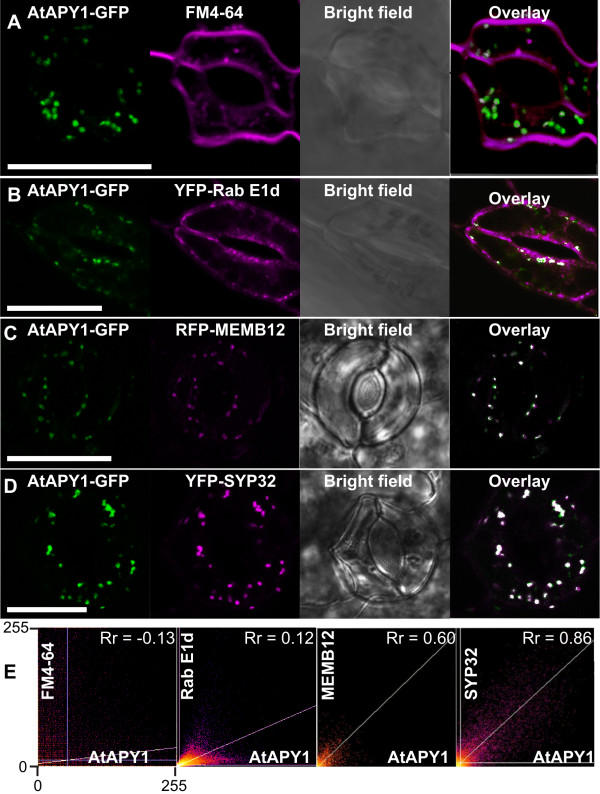Figure 3.
Identification of AtAPY1-positive structures as Golgi. CLSM images of epidermal cells from cotyledons are shown. The GFP fluorescence is shown in green, the FM4-64 (A), YFP (B, D) and RFP (C) fluorescence in magenta. The images from the two fluorescence detection channels were merged with the “Co-localization Finder” plugin (= overlay) and co-localization of the green and magenta signals resulted in white spots. Scale bars = 20 μm. (A) Transgenic seedlings expressing AtAPY1-GFP were treated with 15 μM FM4-64 by vacuum-infiltration. A section of the lower epidermis is shown after 120 min of treatment. (B) Two guard cells of a transgenic seedling co-expressing AtAPY1-GFP and YFP-Rab E1d are shown. (C, D) Transgenic seedlings co-expressing AtAPY1-GFP and either RFP-MEMB12 or YFP-SYP32 were imaged. (E) The distribution of the green and magenta pixels in the dual-channel overlay images in A-D were analyzed with the ImageJ “Colocalization Threshold” and “Coloc2” tool. The x-axes represent the intensities of the green pixels from the GFP channel (AtAPY1) and the y-axes from the magenta channel (FM4-64, Rab E1d, MEMB12 or SYP32). For each scatterplot, the intensities are given as the pixel grey values ranging from 0 to 255. Co-localization clusters the pixels from both channels along a diagonal line. The maximal theoretical value for the Pearson’s correlation coefficient (Rr) is 1.0.

